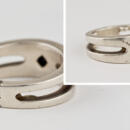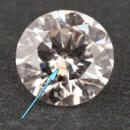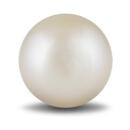Search Results
Fine Jewelry University Articles matching: “How to tell real 10k chain”
Showing only FJU Article results. Click here to show all results.
Fine Jewelry University
-

What are “Blood Diamonds”?
…This system was formally adopted in 2003 and guards against conflict diamonds entering the legitimate diamond supply chain. The diamond industry also adopted a voluntary System of Warranties to assure consumers that their diamonds are from… out look is substantially benefited by diamonds and a good government. When people stop buying diamonds, they really hurt the developing countries that are benefiting from the legitimate sale of diamonds. We at Arden Jewelers have been …
-

Jewelry Solder: What You Should Know
Solder is the unseen “glue” that holds most jewelry together. If you have ever had a ring sized, a chain repaired, or your wedding set joined together, you have very likely seen solder in action. But, what is solder and …metal. These metals–usually zinc, cadmium, tin or indium–all have low melting points, and by controlling exactly how much of these metals are used metallurgists can determine the precise melting point of the finished alloy. How Solder … than the rest of the metal that makes up your jewelry? What is Solder? To answer this question we first have to understand metal alloys. If you haven’t already, now would be a great time to read our article on gold purity . Now you …
-

What Are Lab Grown Diamonds?
… this entire question. Synthetic can mean artificial or even fake. Synthetic can also mean man-made, copied, unreal, or even imitation. But, in this context, what do we mean when we say “synthetic diamond”? In the gemological world, … When is a synthetic not a synthetic? The answer is when it is a simulant. Simulants are gems that look like a real, natural gem but are actually another material. So, a clear or white sapphire can be a diamond simulant because it looks …
-

Gem in the Spotlight: Pearl
… of this, cultured pearls are far more common and affordable than natural pearls. Cultured pearls are considered “real” or genuine pearls. Fake or imitation “pearls” would refer to beads or objects that are made to look like pearls but … shapes. Over time, however, freshwater pearls have increased in quality, and today they are very difficult to tell apart from their saltier cousins. Tahitian Pearls: Also known as black pearls, Tahitian pearls are a type of saltwater …